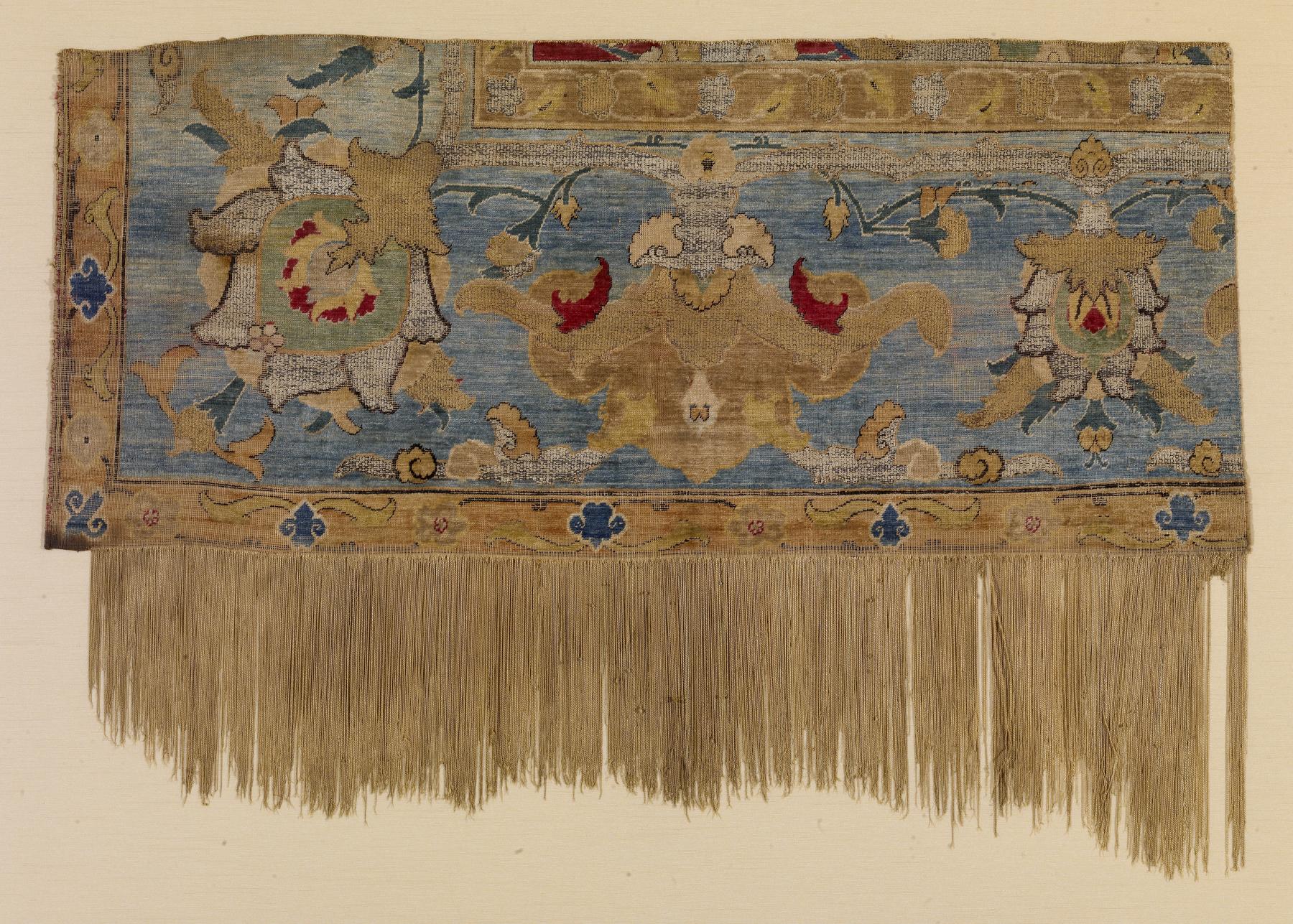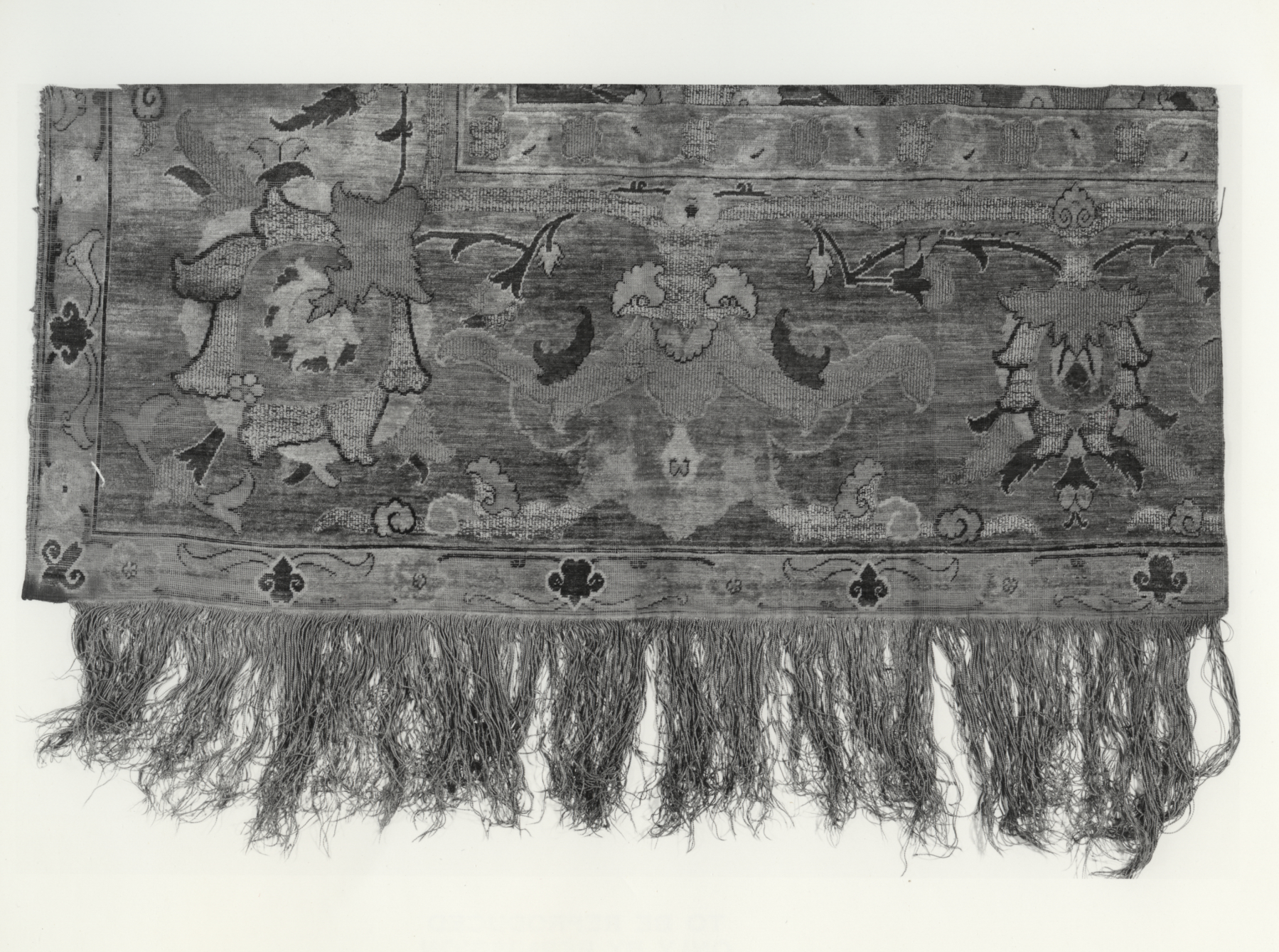Corner Fragment of a Polonaise Carpet
(Islamic World , Textiles and Furniture )
This brightly colored fragment comes from the upper right hand corner of a famous type of Persian carpet with large floral designs, traditionally called Polonaise or Polish. Such carpets were very popular in Europe during the first half of the 17th century. They were often ordered or acquired in pairs from Iran. Shah Abbas (reigned 1587-1629), the Iranian ruler who established Isfahan as his capital, sent a carpet of this type to the doge, or ruler, of Venice as a present in 1603.
Provenance
Provenance (from the French provenir, 'to come from/forth') is the chronology of the ownership, custody, or location of a historical object. Learn more about provenance at the Walters.
Henry Walters, Baltimore [date and mode of acquisition unknown] (?); Walters Art Museum, 1931, by bequest (?) [accessioned in 1988].
Conservation
| Date | Description | Narrative |
|---|---|---|
| 10/7/2014 | Examination | examined for condition |
Geographies
Iran, Isfahan
(Place of Origin)
Iran, Kashan (Place of Origin)
Measurements
H: 21 × W: 30 1/8 × D: 1/16 in. (53.3 × 76.5 × 0.2 cm)
Mount: H: 25 13/16 × W: 35 7/16 × D: 1 3/16 in. (65.5 × 90 × 3 cm)
Credit Line
Acquired by Henry Walters (?)
Location in Museum
Not on view
Accession Number
In libraries, galleries, museums, and archives, an accession number is a unique identifier assigned to each object in the collection.
In libraries, galleries, museums, and archives, an accession number is a unique identifier assigned to each object in the collection.
81.39




